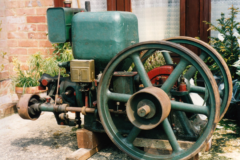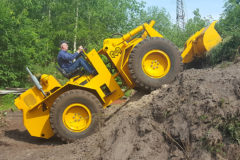Vintage plant collection
Posted by Chris Graham on 17th September 2020
David Reed concludes his tour of the amazing, vintage plant collection belonging to Derbyshire-based JC Balls & Sons, picking out another selection of fascinating machinery.
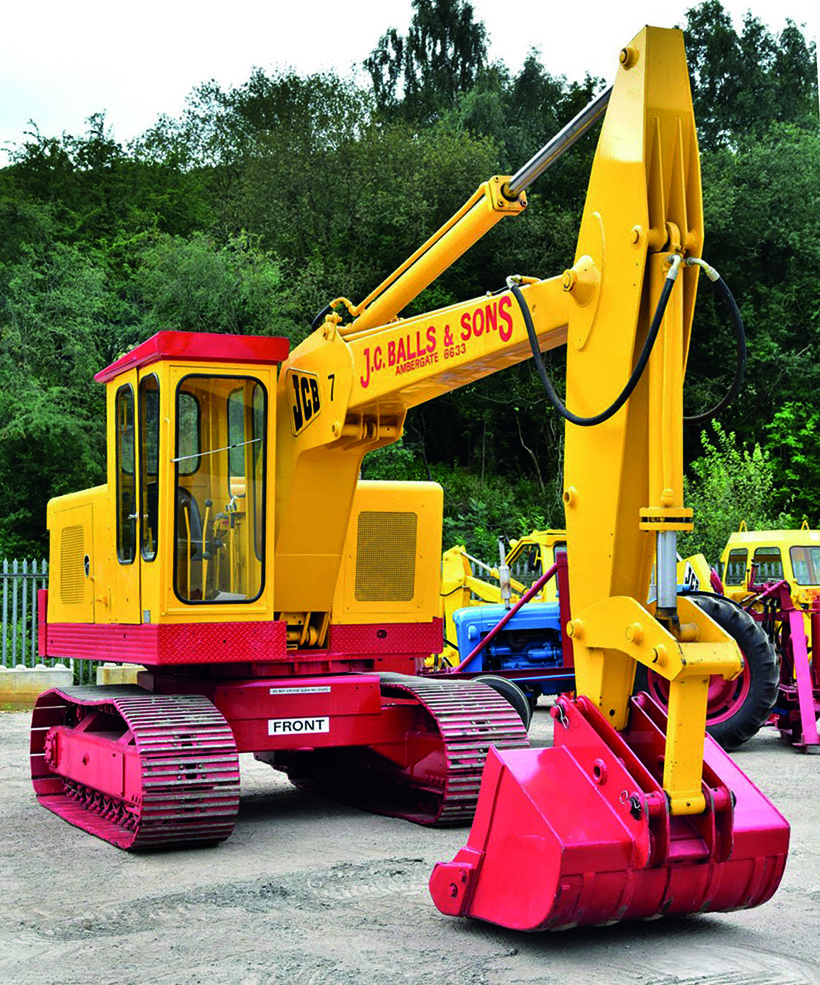
Vintage plant collection: This JCB 7 excavator is an extremely rare machine. It was based on the Warner & Swasey ‘Hopto’ design, and was JCB’s first 360-degree slewing, tracked excavator.
One of the most notable machines in the superb, vintage plant collection owned by JC Balls & Sons is the 1966 JCB 7. This model was the one that kick-started JCB’s excavator revolution, as it turned out to be the industry’s first, tracked, 360-degree excavator.
JCB had agreed to take on the American Warner & Swasey Hopto design of 360-degree slewing excavators, the prototype of which was seen at the Public Works & Municipal Services Exhibition at Olympia, with the excavator going into full production in 1965. It was powered by a Ford D Series, six-cylinder 590E engine, weighed in at 12 tons 14 cwt and had a maximum digging depth of 16 feet 9 inches with a load-over height of 12 feet.
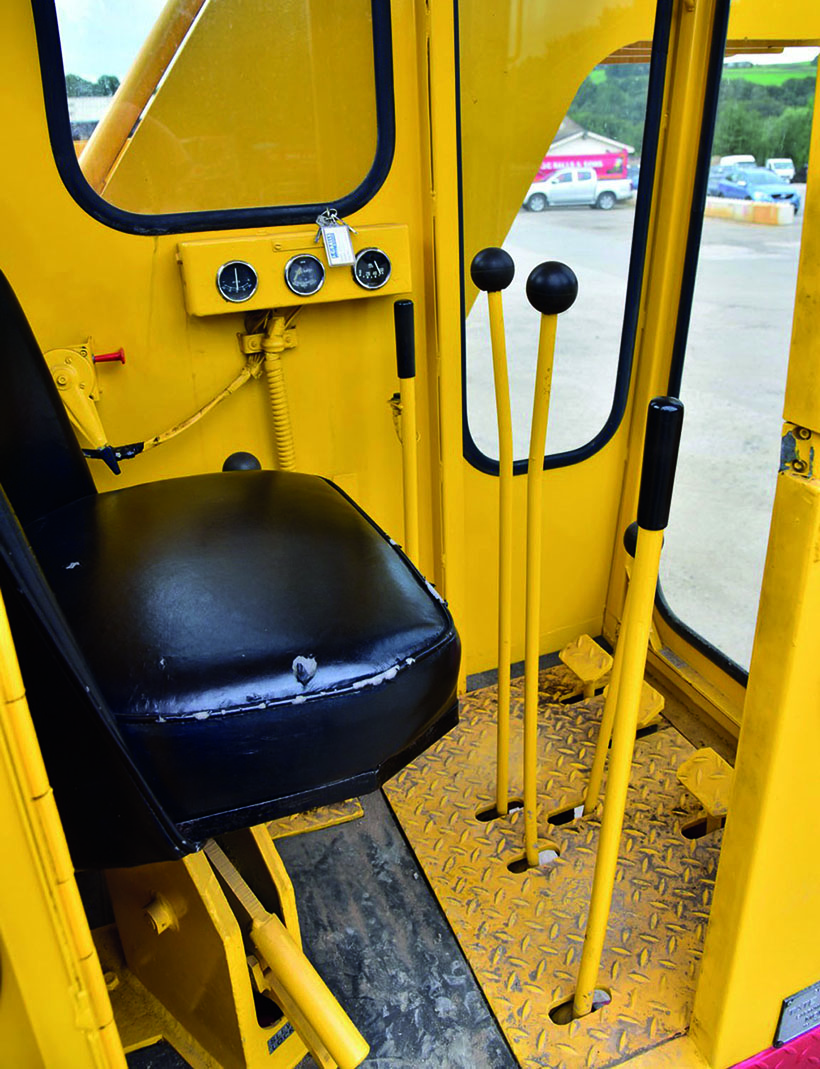
The JCB 7’s cab had been well restored and, with the large windows, gave the operator a clear view of the work being carried out.
Rare survivor
Not many have survived, so the JCB 7 that features in the JC Balls & Sons collection is a rare machine indeed. It was built in 1966, and was the 105th example off the production line, being despatched in January of that year. It ended up in the Inverness area, with Donald Powell who later put it up for sale. It was an opportunity that Kevin and Chris couldn’t miss, and the JCB 7 was transported back to their Derbyshire base and fully restored in 2005, in time to make an appearance at JCB’s 60th anniversary celebrations.
The JCB 7 is another machine in this extensive collection whose development has proved to be the foundation on which JCB built built its reputation. After this first excavator was introduced, the company simply never looked back.

The rear of the excavator proudly displays the JCB 7 name, the forerunner of the JCB excavators that were to follow.
JC Balls & Sons dates back to 1963, when James Christopher Balls – Jim to all who know him – became the owner/operator of a JCB 3 backhoe loader. A second machine followed in 1965, when Jim also employed his first operative. Over the following years, the company grew steadily, with larger premises being acquired in 1978. It moved to its current premises, at the old railway yard in Ambergate, Derbyshire in 1983, due to further expansion. This location boasts purpose-built offices and workshops, and is also the base for the firm’s volumetric concrete mixer fleet.
From the initial plant hire business that Jim established back in ‘63, he soon started to branch out into other areas including contract earthworks of varying sizes. This, in turn, resulted in the company expanding into transport and haulage, with the purchase of a low-loader to move plant around, as well as tipper lorries to transport the spoil from the earthworks.
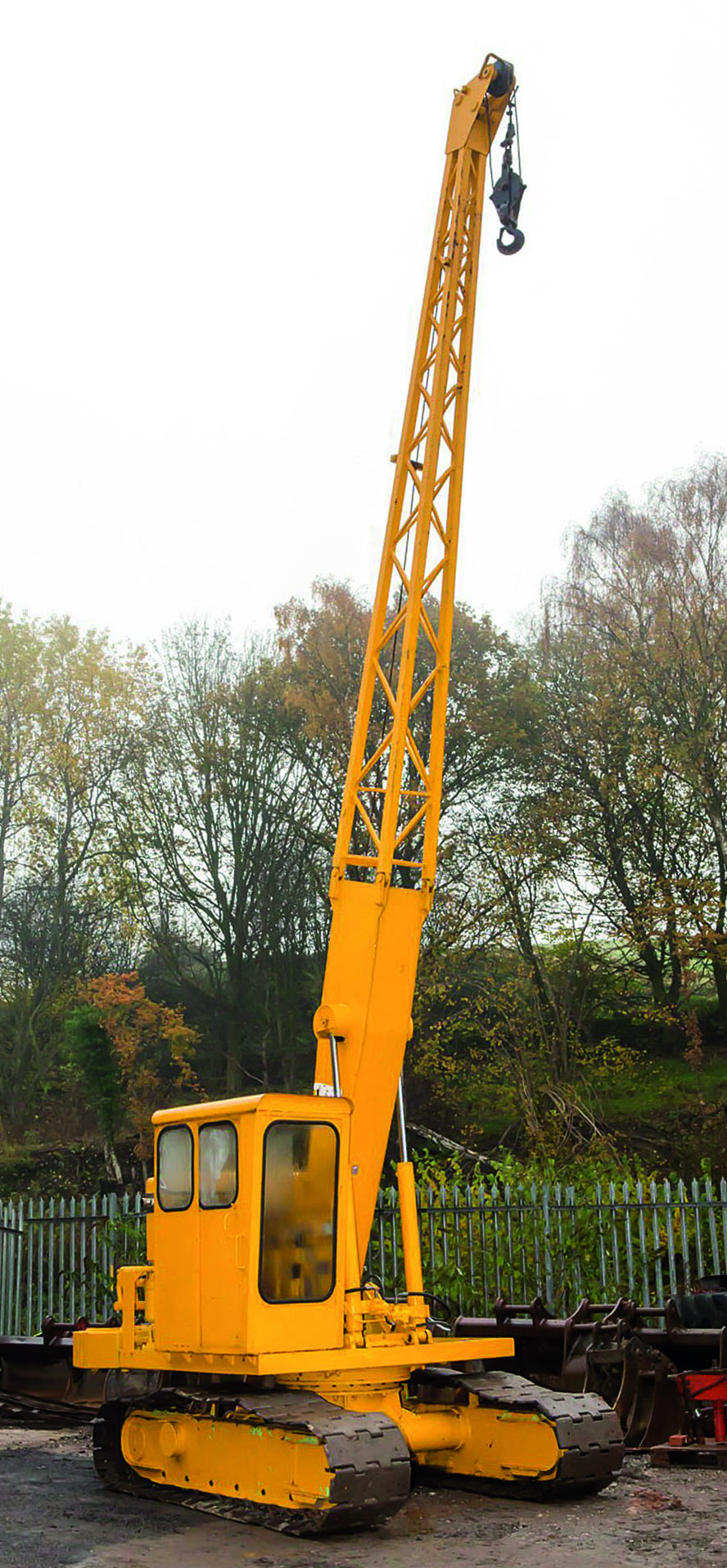
Another rare machine in the JC Balls & Son’s collection is this 1966 Hymac 480 crane which, having been imported in pieces, was assembled in a factory at Rowesley, quite close to the JC Balls & Sons base in Derbyshire.
A move into recycling
By the late 1990s, the firm had diversified into materials recycling, acquiring land on which to establish its own recycling operation at Cotes Park Industrial Estate, near Alfreton. Moving forward still further to 2012, additional land was purchased with a new washing plant which enabled the production of aggregates and sands from seemingly useless soils. Today the company employs over 100 people and operates a fleet of more than 50 machines.
Many of the vehicles are available for hire, with two- to 36-tonne excavators being available, as well as backhoe loaders, wheeled-loaders, tracked loading shovels plus Caterpillar D6 dozers. Contracting is also carried out using a fleet of over 30 lorries, while their recycling facility at Cotes Park uses screens, washers and a state-of-the-art soil-washing plant that produces certified secondary aggregates.
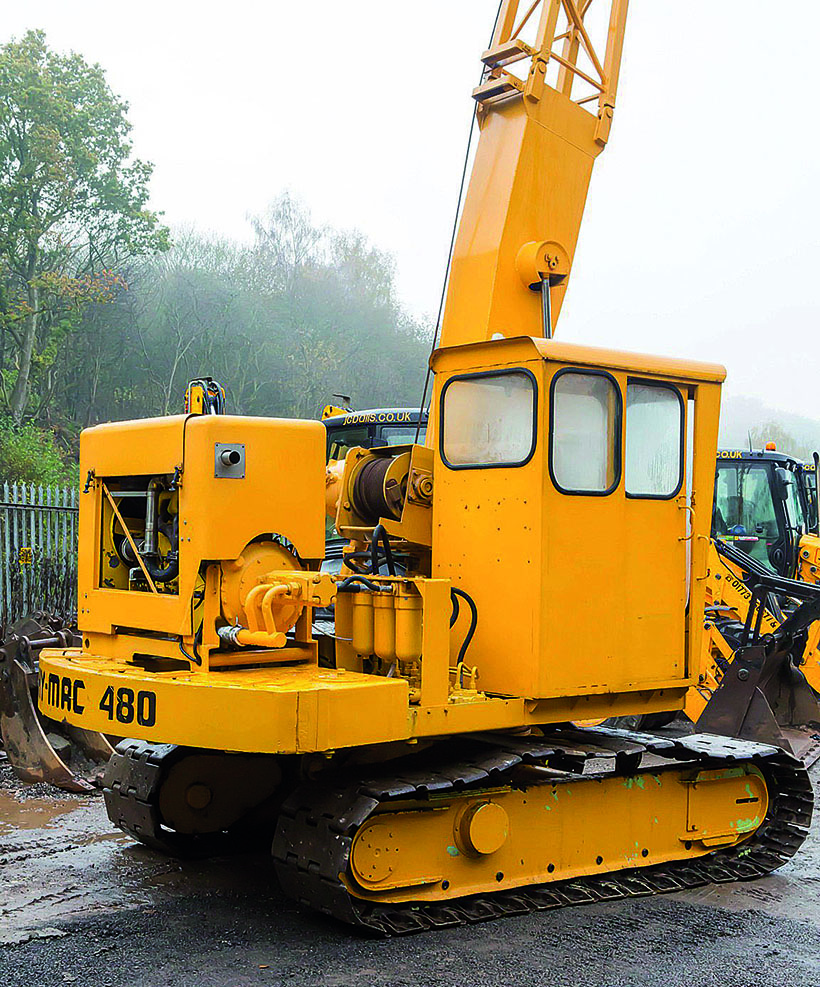
This example came from the Buxton area, and had been fully restored by its previous owner before being put up for auction and getting snapped-up by the JC Balls collection around 15 years ago.
JC Balls & Sons remains a family-run firm, with Jim and his sons Chris and Kevin at the helm although, looking to the future, the next generation of the family is heavily involved in the running of the business.
Back with the machinery, it doesn’t all fall under the JCB banner. One of the oldest machines in the collection is a mighty, 1929 Caterpillar Sixty crawler. This model was actually introduced in 1925, with production ceasing in 1931 with more than 13,000 units having been produced. This example carries the serial number PA5663, and was imported here from the US by Malcolm Forster, who had almost completed its restoration when he sold it to Kevin who, along with colleague, Dave Whittle, finished the job. It’s a pretty well-known machine and featured at the old Site Equipment Demonstration Show (SED), in 2007.
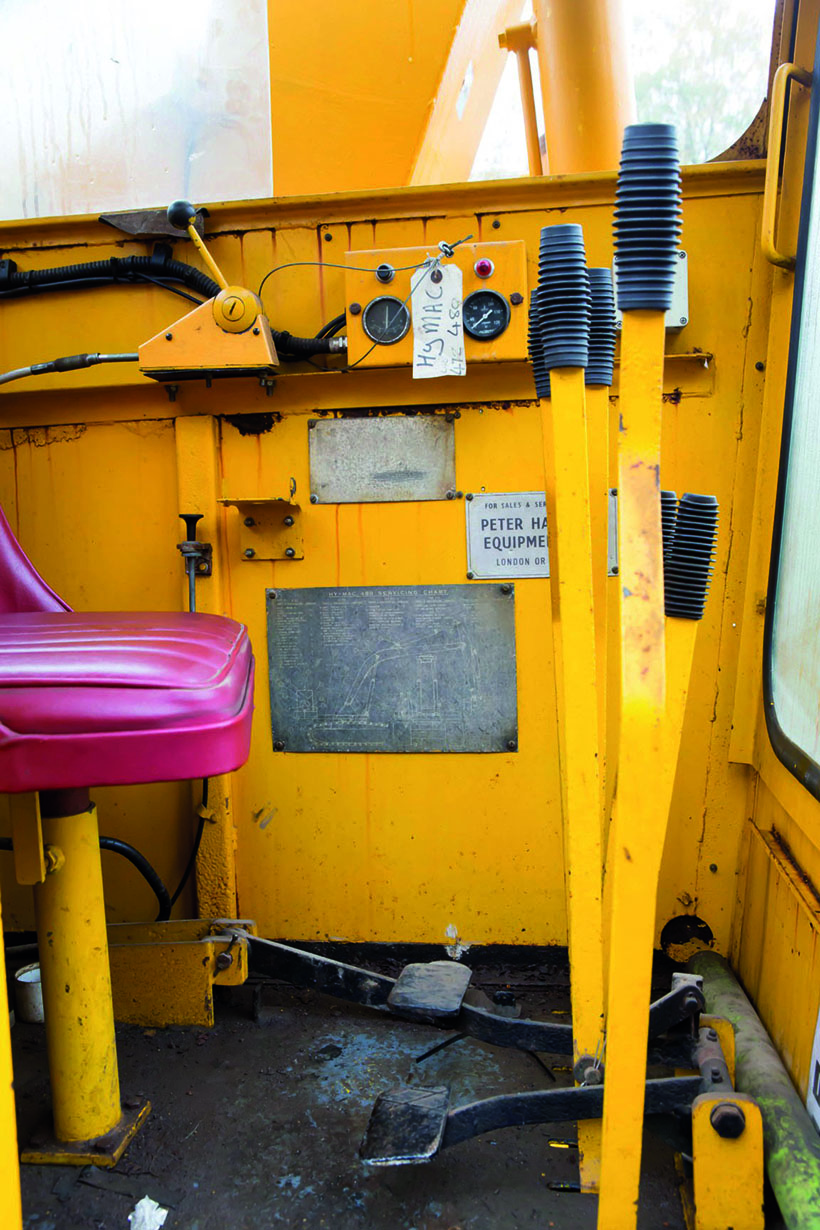
The interior of the Hymac 480’s cab has also been restored, giving the impression that it’s still a working machine.
Continuing with the Caterpillar theme, there’s also a 1943 Caterpillar R4 in the collection. It’s another machine in superb condition, and is fitted with a LeTourneau cable-control dozer blade and Hyster winch. “It’s possibly a crawler that was shipped over from the US under the Lease Lend scheme,” Chris said, “and was used for levelling runways.” The R4 was put up for auction by The Lighthouse Club. “We did some work on the slewing clutch,” Chris continued, “but, apart from that, the R4 was in the same condition as it is now when it arrived with us.”
Wartime Cat
Slightly older is a 1940 Caterpillar D6 2H, that was originally owned by Derek Crouch, who started his agricultural contracting business in Northumberland with the D6, before moving into opencast mining and civil engineering. “It ended up being displayed in the reception area of the office in their yard,” Kevin said, “and we bought it from their sale.”
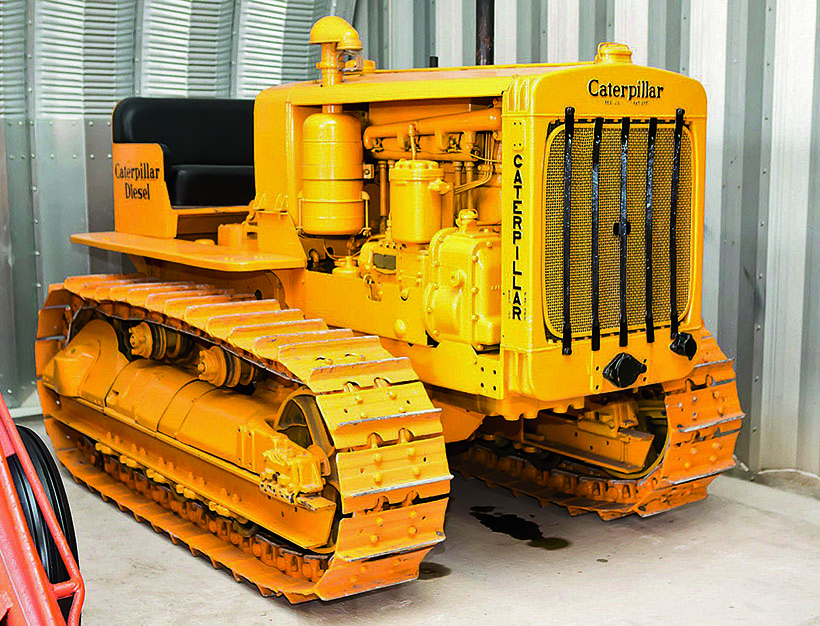
This 1940 Caterpillar D6 2H was originally owned by Derek Crouch, who started his agricultural contracting business in Northumberland.
Bang up to date, though, is a Caterpillar D6T LGP dozer, that entered the JC Balls & Sons fleet last year. “We use it on site work all the time,” Chris continued, “It’s fitted with a full GPS system.”
Also on site there’s a 1983 Bray 552 front loader, which is another machine that’s awaiting restoration. “It came from R Geeson at Ripley,” Kevin explained, “but wasn’t running when we got it.” The 522 was introduced in 1981, came with a new cab and was powered by a Leyland lorry engine. It was definitely a step up from the previous model, namely the Bray 540, which was powered by a Ford D Series engine and featured an optional extra cab.
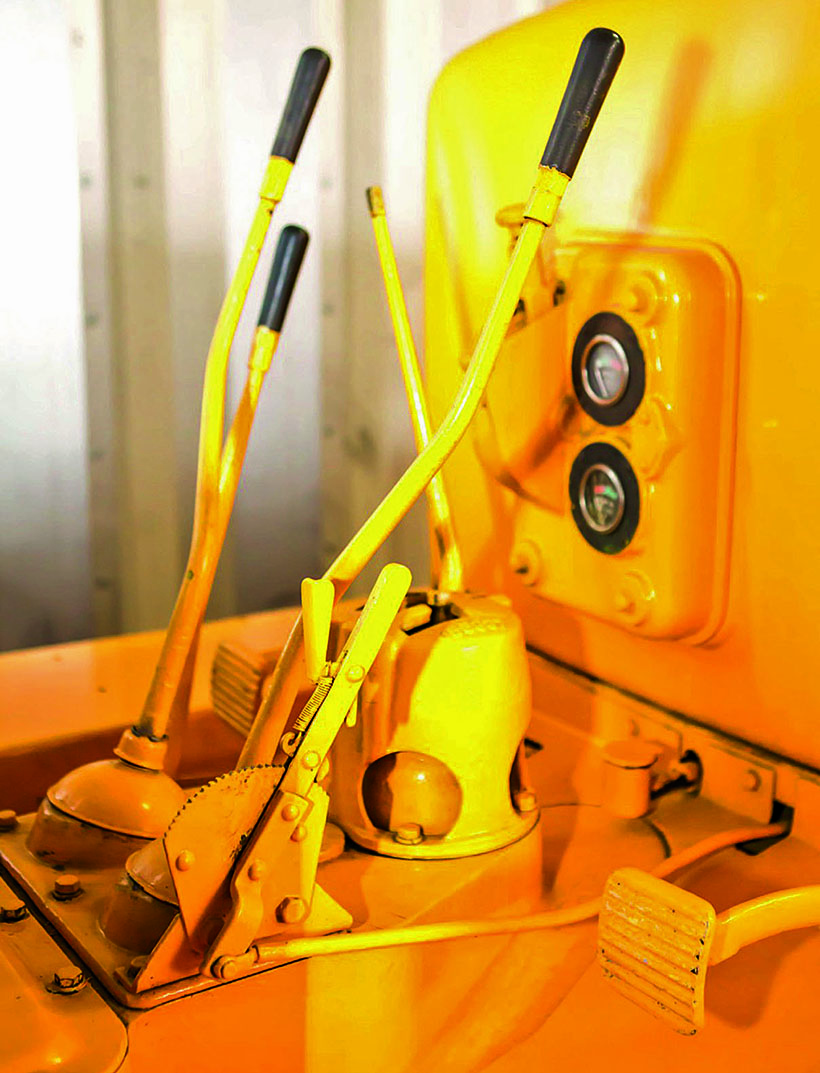
The controls on the Caterpillar D6 2H were a little basic, but did the job.
The rare machines in the collection continue with a Hymac 480 crane. It’s a pretty local machine, having been imported and assembled in a factory at Rowesley, quite close to JC Balls & Sons’ base in Derbyshire. The 480’s limitation, though, was that it could only slew through 270°, rather than the full 360. This example came from the Buxton area, and had been fully restored by its previous owner before being put up for auction and brought for the JC Balls collection about 15 years ago.
Another interesting – and unusual – machine in the collection is GOG 310D, a 1966 John Deere 760 self-elevating scraper, that’s still in its working clothes. The first such machine introduced by John Deere was the seven-cubic-yard model 840, in 1957, which represented the construction industry’s first commercially-produced, self-propelled elevating scraper. It was replaced, in 1962, by an updated, eight-cubic-yard model, the 5010. This turned out to be a commercial success, with over 500 units sold.

Kevin Balls was to be seen putting this 1966 John Deere 760 self-elevating scraper through its paces at the company’s open day.
Popular update
John Deere redesigned the 5010 in 1965, calling the new model 760 and, with 121hp and a nine-cubic-yard rating, it proved very popular in both construction and agricultural sectors. As for JC Balls’ example, it came from Les Wilson who’d worked it at Jacksdale, in Nottinghamshire. “He rang us up and asked us if we wanted to buy it,” Kevin said. It’s definitely a working machine, which often gets put through its paces.
Finally, to round things off, there are a couple of commercials that are well worth a mention. The first is APR 196B, a 1964 Ford Thames Trader short wheelbase tipper. It originally worked in the Yeovil area, and passed into the JC Balls fleet 1996. Then there’s TBH 506L, a superb, 1972 Foden S39 powered by a Leyland 680 engine. It was new in Aylesbury and used on tipper work, and passed to Chris and Kevin in 2007. Since then, it’s been given a full, nut-and-bolt restoration by Steve Mayle.
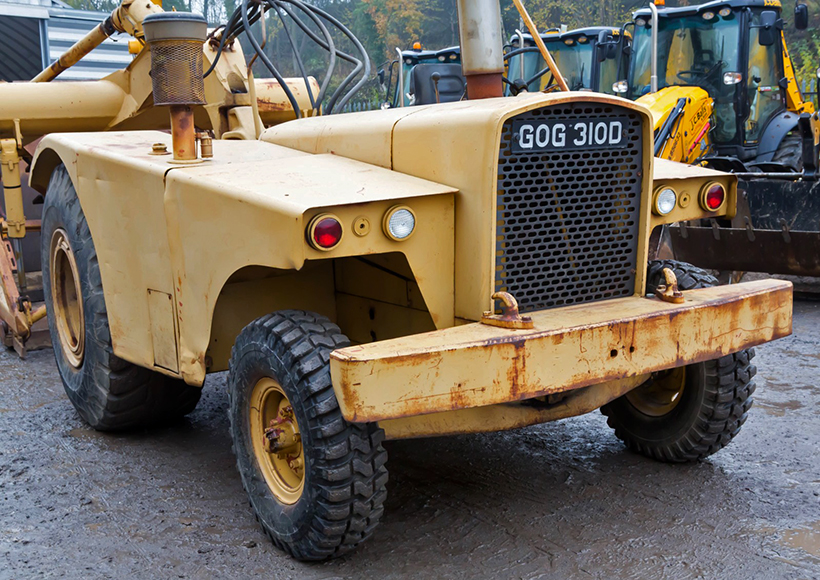
The tractor unit of the 1966 John Deere 760 self-elevating scraper carries the registration GOG 310D, indicating that it was first registered in 1966.
The J C Balls & Sons collection is well worth seeing due to the quality of the restorations, and the rarity of the machines. Every so often, the company organises an open day at its Derbyshire base or, alternatively, it’s typically possible to see many of the machines at various events around the country.
A highlight of many an agricultural show is the display given by the famous dancing diggers, which entertain crowds at local events around the East Midlands. The routine performed demonstrates the versatility of the JCB backhoe loaders perfectly, and includes highlights such as balancing the machines on their sides. If you get the chance, this is a show not be missed.
For a money-saving subscription to Old Glory magazine, simply click here

This 1929 Caterpillar Sixty Crawler was imported into the UK by Malcolm Forster, who had almost completed its restoration when it passed into the JC Balls & Sons collection, where the job was finished.

This Caterpillar D6T LGP dozer entered the JC Balls & Sons fleet last year, and is used for site work continually.
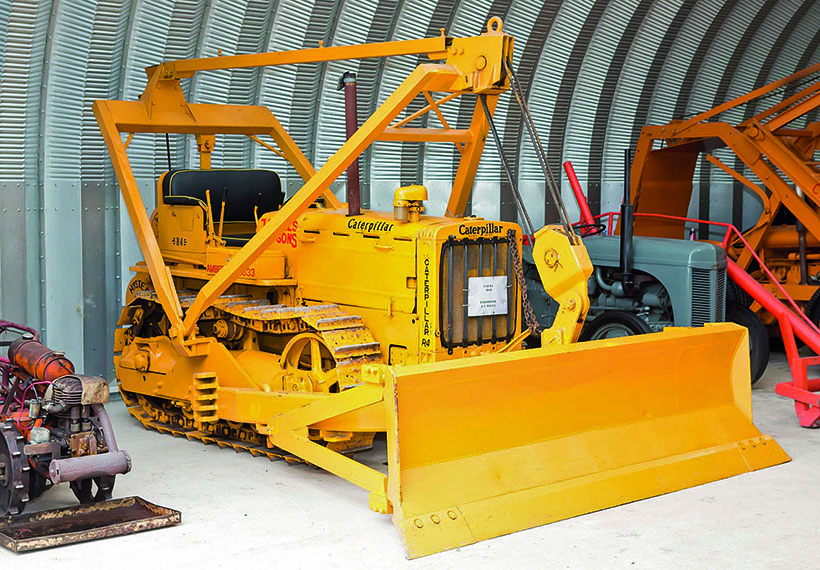
This 1943 Caterpillar R4 is in superb condition, and was fitted with a LeTourneau cable-controlld dozer blade and Hyster winch.

The line-up of vintage backhoe loaders that are a key part of the JC Balls & Sons’ vintage fleet.
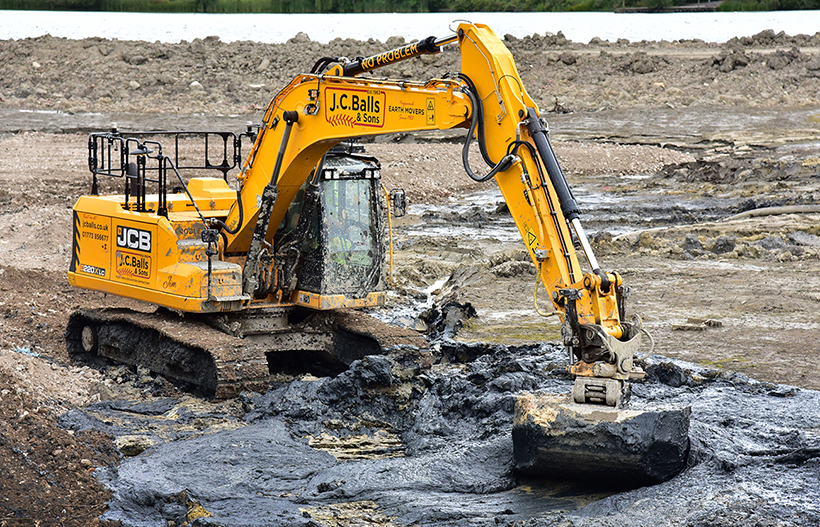
There are plenty of modern machines working in the JC Balls & Sons working fleet, such as this JCB 220XLC.

Jim Balls with the JCB 3 that has the same specification as the machine that he started the business with, back in 1963.



